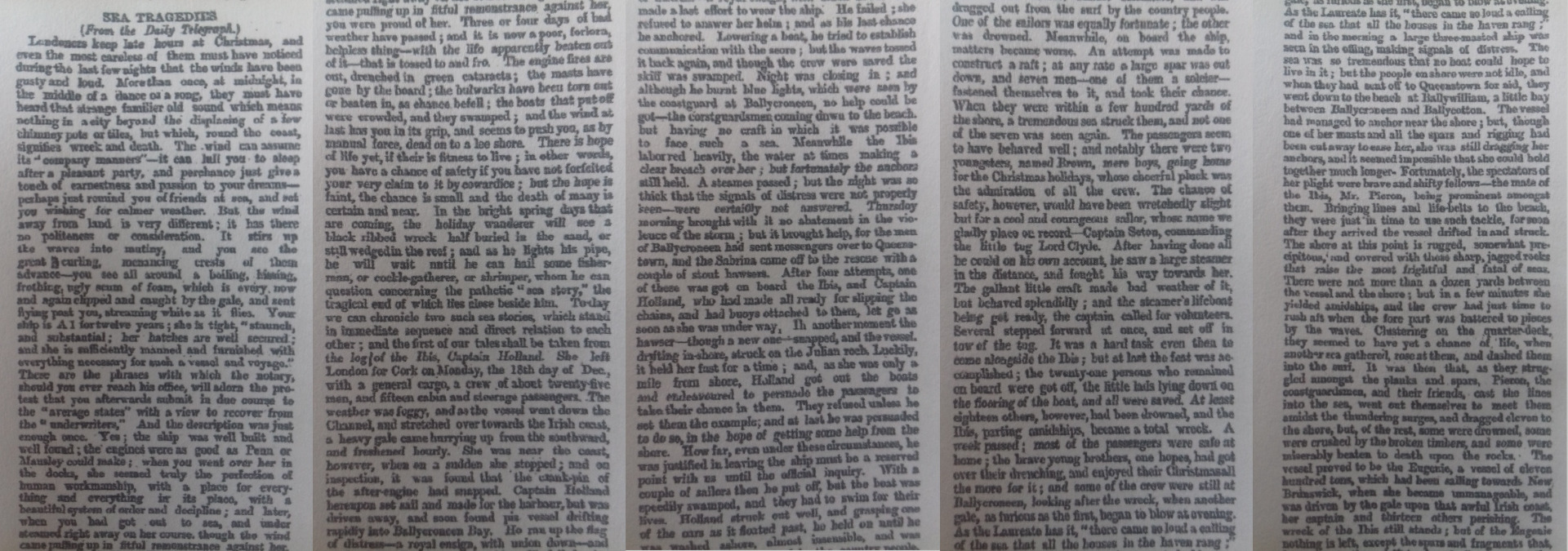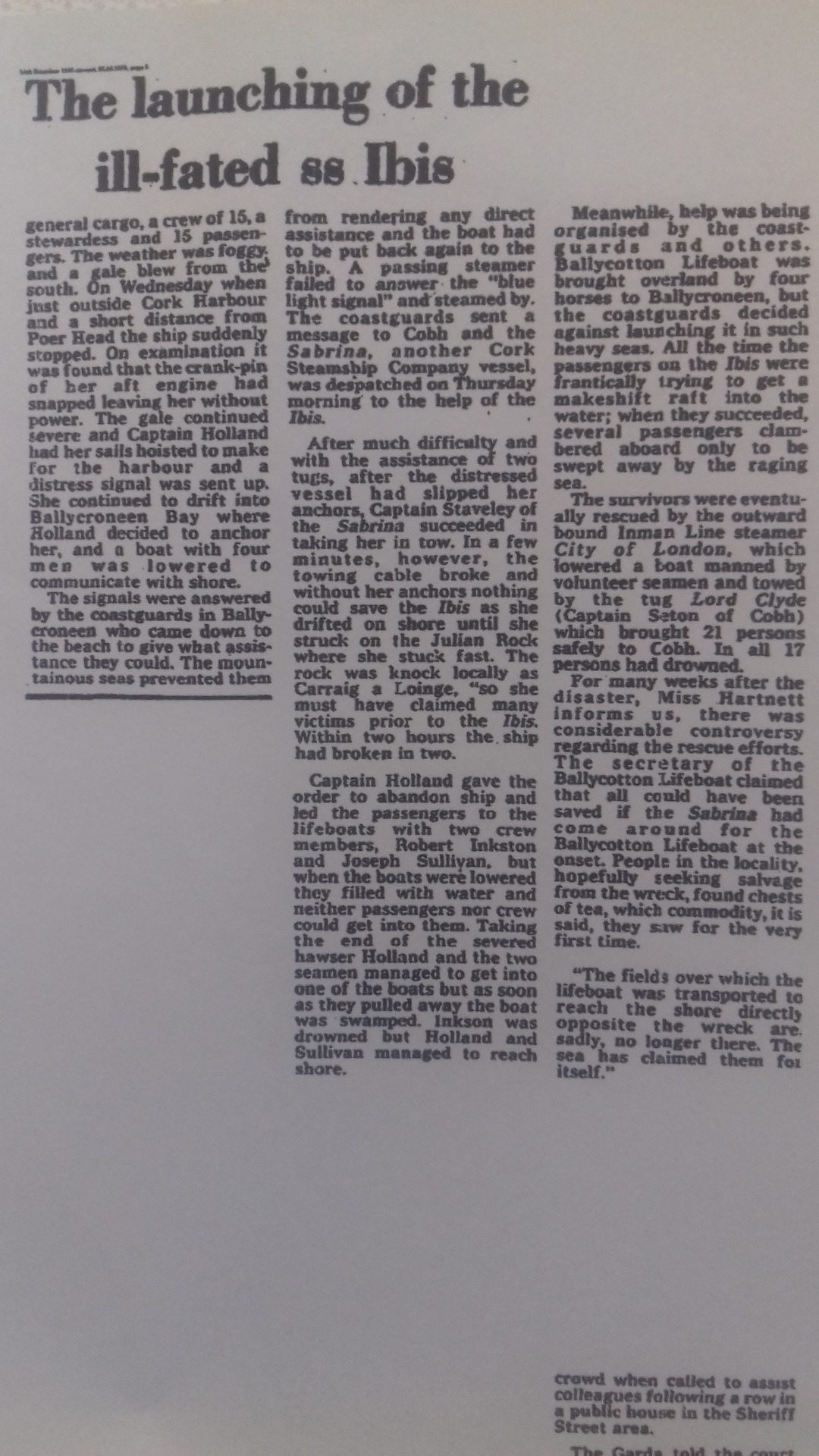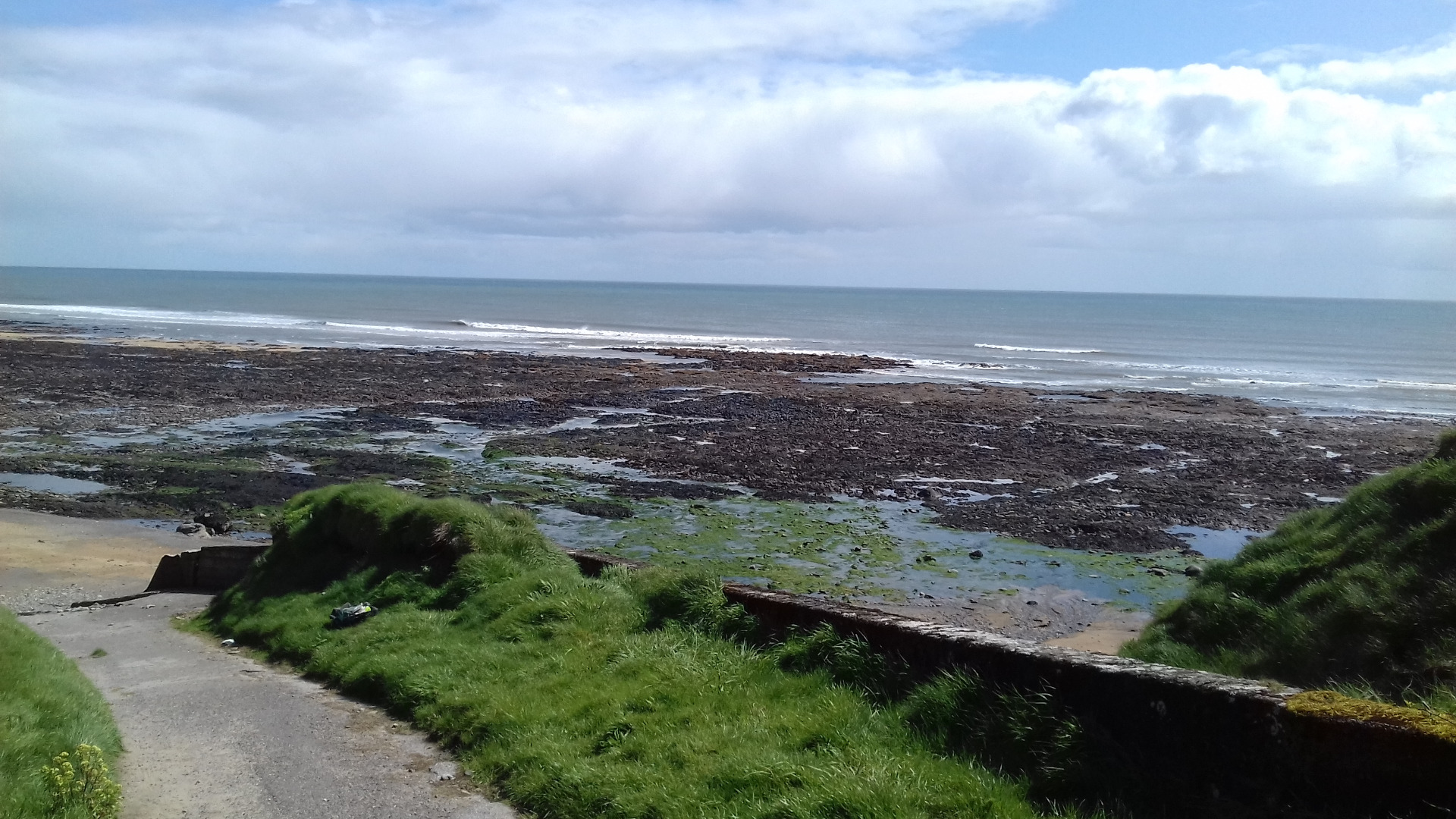The Ibis
"There came so loud a calling of the sea that all the houses in the haven rang"
In December 1865, the British Ibis was travelling from London to Cork when struck a large rock off the coast of Ballybrannigan. The ship, carrying tallow, wine, brandy and feathers, as well as a crew of 25 and 15 passengers, was engulfed in a thick fog as soon as it entered Cork Harbour, as well as encountering a strong, southerly gale that "freshened hourly".
Captain Holland sensed difficulty with the engine and upon inspection, discovered that the crank pin of the after engine had snapped and the vessel was in danger. The captain raised that sails in an attempt get to harbour but the current was taking the ship towards the rocks in the opposite direction. Captain Holland then dropped the anchor in a last ditch attempt to avoid disaster.
All night the ship was caught in an almighty storm, with huge waves crashing against the hull, making rescue seem impossible without a reprieve in the weather. Numerous ships passed in the night in the distance but the dense fog prevented the ships from seeing the Ibis' blue rescue lights and coming to her aid.
The Captain attempted to rescue the crew and passengers by lowering the rescue boats but nobody on board dared to brave the choppy seas in the lifeboats. By the next morning, Ballybrannigan locals had discovered the troubled vessel and had already gotten word to Queenstown (Cobh) to get help to the Ibis and her personnel.
Queenstown sent help by sea and attempted to drag the ship back to sea. However, the ropes snapped and the Ibis began drifting aimlessly towards the rocks off Ballybrannigan. The crew and passengers, accepting the peril they were now in, decided to use the lifeboats, provided that Captain Holland would take the lead to prove their suitability.
Captain Holland duly obliged and passengers and crew, including the captain's wife, headed for shore to avoid the impending collision of the ship. While many made it to Ballybrannigan sands, Captain Holland's boat capsized and some crew members perished in the freezing sea. Captain Holland, however, grabbed hold of an oar and used it to stay afloat and somehow swam to Ballybrannigan Beach where he was dragged from the icy waters by Ballybrannigan locals.
There were, however, people still left on board the Ibis as time and opportunity to save them was running out. Reluctant to enter any boats, due to the ill-fated break for the shore of Captain Holland, their chances of survival seemed to be diminished.
A little tug, named Lord Clyde, was one of the boats sent from Queenstown to aid in the rescue of the passengers and crew. Captain Seton has spotted a large, outward-passing steamer, the City of London, out in Cork Harbour and began its pursuit. The little tug eventually caught up with the steamer and requested the service of as many volunteers as possible to help save those remaining on the Ibis. Several crew members agreed to help and fighting the current, the weather and the dangers of sailing so close to a doomed craft, they helped save many people from the Ibis before it crashed into the rocks.
Thanks to the efforts of Captain Seton and his impromptu volunteers, 21 people were saved and landed at Ballybrannigan, however, the lives of 18 people were lost.
Locals from Ballybrannigan began seeking salvage in the wreckage as soon as the weather allowed and it is said that the tea that they discovered in the wreckage was the first of this commodity that they had seen with their own eyes.
The rock upon which the ship
would perish, was known as Julian's Rock prior to the peril of the Ibis. Today it is known as Ibis Rock.




